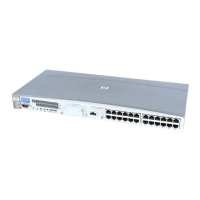3. Phase 2
a. Execute the Data Protector drstart command that will install the DR OS
and start the restore of critical volumes.
b. The system must be restarted after the drstart command finishes.
c. Additional steps are required if you are recovering a Cell Manager or
performing advanced recovery tasks. Refer to “Advanced recovery
tasks” on page 96 for more information.
4. Phase 3
a. Use the Data Protector standard restore procedure to restore user and
application data.
Requirements
• The partitions have to be the same size or larger than the partitions on the failed
disk. This way the information stored on the failed disk can be restored to the
new one. Also, the type of filesystem and compression attributes of the volumes
must match (FAT, NTFS).
• The hardware configuration of the target system must be the same as of the original
system. This includes SCSI BIOS settings (sector remapping).
• If there were volume mounts points created before disaster, these mount points
must be recreated before starting the disaster recovery procedure as volume mount
points are not restored automatically. If the mount points are not recreated, data
might be restored to wrong location.
Limitation
• Internet Information Server (IIS) Database, Terminal Services Database and
Certificate Server Database are not restored automatically during Phase 2. They
can be restored on the target system using the standard Data Protector restore
procedure.
Preparation
To prepare for a successful disaster recovery, you should follow the instructions related
to the general preparation procedure together with the specific method requirements.
Advance preparation is essential to perform the disaster recovery fast and efficiently.
You should also give special attention to the disaster recovery preparation of the Cell
Manager and Microsoft Cluster Server.
Disaster recovery for Windows42

